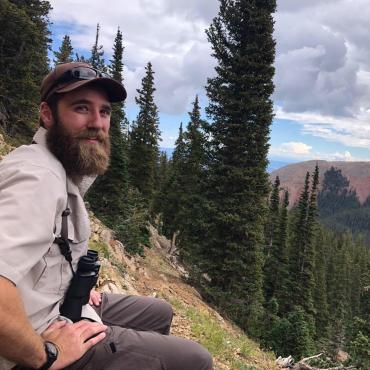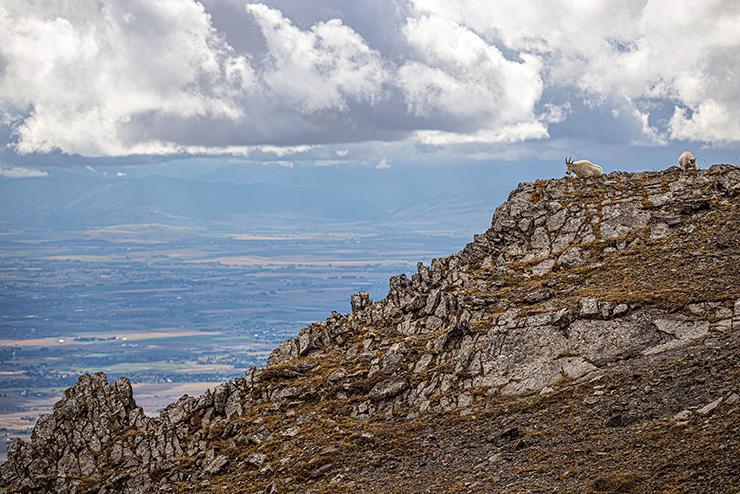Where Land Meets Sky
Respect in goat country.
Mountain goats live in some of the most remote and precipitous terrain in North America. The challenge and beauty of these places also draw recreationists, who often encounter goats along the way. What people do in these encounters matters, not only for their own safety, but also for the health and wildness of the goats.
The Bridger Range near Bozeman is an excellent place to see mountain goats. This range has held a healthy population of goats since they were introduced in 1969. The Bridgers offer steep, rocky outcroppings that provide escape terrain and high-elevation mountain ridges where the wind sweeps away the snow, revealing forage for the goats. Mountain goats grow thick, white coats that enable them to live in harsh climates year-round (and make them easy to spot from afar).
Montana Fish, Wildlife & Parks has partnered with the Rocky Mountain Goat Alliance and volunteers to conduct ground counts of goats in the Bridgers and in other ranges. By staging trained observers at several key locations at the same time, biologists can classify as many billies, nannies, and kids as possible all at once—something that isn't always possible from a helicopter. The most recent count in 2019 found an all-time high of 127 goats in the Bridgers—a conservation success!
The Bridgers are also a particularly busy destination for hiking, camping, hunting, skiing, mountain biking, and other sports. It's no wonder why; the accessibility and stunning views from these mountains make them beloved by many.
Being conscientious on the trail will not only enhance your experience in the mountains, but it will also help keep our wild spaces healthy and reduce conflicts between humans and wildlife. Such conflicts with mountain goats can lead to human and pet injuries, reduced goat health, and dangerous goat behavior, especially when goats become accustomed to humans.
However and wherever you recreate in goat country, here's what you can do to be safe and keep goats wild and healthy:
Keep your distance. Give goats plenty of room when you see them. Always keep dogs under control. A nanny goat will protect her young if she feels threatened or crowded. If a goat is reacting to your or your dog's presence, you're too close or too loud.
Manage attractants. Goats are attracted to salt, so keep sweaty items like clothes and backpacks secured. If latrine facilities aren’t available, urinate away from trails and campgrounds. Never feed goats or other wildlife.
Yield to goats. Give goats the right of way whenever possible. If you are hiking downslope from goats, watch for falling rocks. Goats often travel at night, so keep your dog in your tent. If a goat approaches you, move away.
Responsible recreation is a critical component of human safety and wildlife health everywhere. Minimizing negative human impacts on the places and wildlife we enjoy will help ensure they are accessible and enjoyable in perpetuity.
Morgan Jacobsen is the Region 3 information officer for Montana Fish, Wildlife & Parks.













